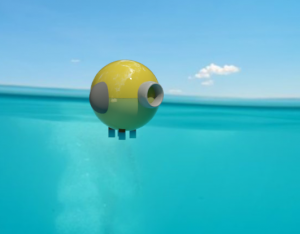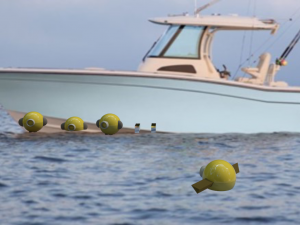Eradicating microplastics – Team Elektrica’s BioClear robot
Lara and Elspie report on how damaging microplastics are for the environment, wildlife and health, and present their solution, a robot called BioClear.
There are hundreds of these in your water bottle, you probably ate thousands for lunch, they’re in the Antarctic and they’re in your car tyres and there are more of them in the sea than stars in the milky way.
We are talking about microplastics.
What are microplastics?
Microplastics are fragments of any type of plastic that are less the 5mm in length. They can be intentionally composed for products such as facial scrubs or by breaking away from larger plastic items. Microplastics are found everywhere – in the air we breathe, the water we drink and the ground we walk on. Notably, they often end up in marine ecosystems (like oceans, and rivers) by being flushed down a drain, put into landfill, or littered.
Why are microplastics a threat?
Microplastics are dangerous to all organisms. When they find their way into aquatic bodies, they pose an immense threat to local marine life. They can obstruct and damage organisms’ digestive system leading to malnutrition, starvation and eventually death. If this isn’t bad enough, the surface of plastic absorbs toxins from the environment. Thus, when the plastic is digested toxins are deposited into the organisms’ bloodstream. This causes hormonal disbalance, reproductive harm, and damage to the immune system. These toxins are then passed down the food chain causing detrimental, irreversible harm to entire ecosystems and species.
Humans, as consumers of seafood, also consume these toxins. The effects of microplastics on humans are woefully under-researched. However, microplastic consumption has been linked to organ problems, developmental delays, and numerous other health problems.
Current solutions
Currently, the market for aquatic microplastic solutions is lacklustre. Instead of cohesive designs, there are human-reliant methods that each perform a small role in eradicating them. For example, a Raman microscope can detect microplastics, but not remove them; a manta net can remove but not detect them. This is due largely to the void in research and awareness.
Our design
When we learnt of this pressing issue, we knew we had to help. BioClear, our design, is a robot that moves in water to detect and remove microplastics – hopefully eradicating them from the marine ecosystem (images below). Furthermore, BioClear will use cameras, water quality sensors, and infrared sensors to research how microplastics clusters form and the impact of microplastics on an area. Therefore, the eradication process will be far more efficient in the future. Last term, we entered BioClear into the Amazon Longitude Explorer prize and we are currently participating in the finals.
What can you do?
There are many easy steps that you can take to reduce the microplastics pollution and protect yourself from microplastic-induced health problems. Simply reducing your usage of single-use plastics can decrease their number. There are many easy ways to do this, for example, using washable rather than disposable cutlery and carrying a refillable water bottle rather than a plastic one.
However, the main microplastic polluters are large businesses and corporations. As an individual, you can probably achieve the greatest impact on this form of pollution by pushing industries to do the right thing, be it by educating people around you on the topic, writing to organisations, or buying from environmentally-aware companies where possible.
Additionally, you could help us eradicate microplastics by voting for BioClear (Team Elektrica) in the Amazon Longitude Explorer’s Prize People’s Choice Awards. By winning, we will get funding to help build our design (pictured below) and clear the oceans of microplastics. The vote closes on the 2 July.



